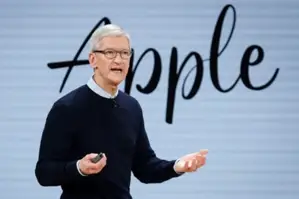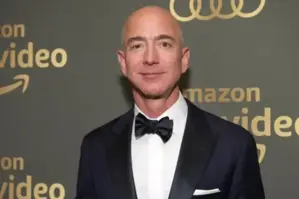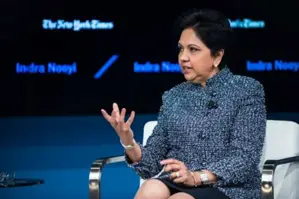What is a CEO? Overview, Responsibilities, Characteristics
What is a CEO? This question is fundamental for understanding the highest executive role within a company. A Chief Executive Officer (CEO) is responsible for the overall management and strategic direction of an organization. This article delves into the core responsibilities of a CEO, the essential characteristics that define effective leadership, and how CEOs influence a company's success. Whether you're aspiring to become a CEO or simply curious about this pivotal role, you'll gain valuable insights into what makes a successful Chief Executive Officer.
What is a CEO?
A CEO (Chief Executive Officer) is the highest-ranking executive in a company. The CEO is responsible for making major decisions, managing overall operations, and setting the company's strategic direction. Key duties include leading the executive team, overseeing financial performance, and representing the company to stakeholders. CEOs often must combine strong leadership, strategic vision, and decision-making skills to drive organizational success.

Learn about "What is a CEO?"
What is a CEO responsible for?
A CEO is responsible for several critical aspects of a company’s success. They set the strategic direction and long-term goals of the organization, ensuring that the company has a clear vision and path forward. The CEO makes high-level decisions on policies, operations, and investments to drive the business forward. They also lead and manage the executive team, fostering a productive work environment and aligning efforts with the company’s objectives.
Additionally, the CEO oversees the company’s financial health, including budgeting and performance monitoring. Representing the company to stakeholders, such as investors, customers, and employees, is also a key responsibility, as they communicate the company’s vision and build vital relationships.

CEO's responsibility to the company
What does a CEO do?
A CEO is responsible for steering the overall direction and management of a company. They set long-term goals and strategic plans to guide the organization. Key duties include making high-level decisions on policies, and operations, and leading the executive team. Additionally, the CEO manages the company's financial health by overseeing budgeting and financial reporting and represents the company to stakeholders such as investors, customers, and employees.

CEO's corporate management job
What are the characteristics of a CEO?
- Leadership: The ability to inspire and guide the executive team and employees toward achieving company goals.
- Strategic vision: A clear understanding of the company’s direction and the ability to set and execute long-term strategies.
- Decision-making skills: The capacity to make informed, timely decisions under pressure and assess risks effectively.
- Adaptability: The ability to navigate and lead through change, uncertainty, and evolving market conditions.
- Integrity: Upholding strong ethical standards and building trust with employees, customers, and investors.
- Emotional intelligence: Understanding and managing one’s own emotions and those of others to foster a positive work environment.

The characteristics of a CEO
What is a CEO management style?
A CEO's management style significantly impacts organizational culture and effectiveness. Here’s a brief overview of the different styles:
Autocratic
The autocratic management style is characterized by a CEO making decisions alone, with little or no input from team members. The CEO has complete control over decisions, sets direction, and enforces rules and policies without consulting others. However, it can stifle creativity, reduce employee motivation, and lead to dissatisfaction if used excessively, as employees may feel their input is undervalued.

Absolute Power
Democratic/Participative
The democratic/participative management style involves the CEO encouraging input and collaboration from employees when making decisions. The CEO seeks feedback, ideas, and suggestions from the team, promoting a sense of shared responsibility and participation. This style promotes transparency, boosts morale, and encourages creativity, as employees feel valued and empowered. Sometimes it can slow down the decision-making process because it requires consensus or input from multiple stakeholders.

Listen to opinions
Laissez-faire
A laissez-faire management style is when the CEO provides minimal supervision and allows employees significant autonomy in making decisions and managing their tasks. The CEO trusts team members to take responsibility for their work, providing guidance only when necessary. This style fosters creativity, innovation, and independent problem-solving, and is suited to highly skilled and motivated teams. Laissez-faire leaders provide freedom but ensure employees are always aligned with the company’s goals.

A laissez-faire management style
Suggested for you:
Transformational
Transformational management is where the CEO focuses on inspiring and motivating employees to achieve significant change and improvement. Transformational CEOs lead by example, establish a clear vision for the future of the company, and encourage employees to think creatively and strive for continuous improvement. This requires strong leadership skills and a clear vision. Without the right structure, it can lead to burnout or unrealistic expectations.

Transformational leaders lead
Examples of successful CEOs
Here are a few examples of successful CEOs who have significantly impacted their respective industries:
Elon Musk – CEO of Tesla and SpaceX
As the CEO of Tesla and SpaceX, Elon Musk is renowned for his innovative vision and disruptive approach. He has been pivotal in advancing electric vehicles and sustainable energy solutions, significantly impacting the automotive and energy industries.
At SpaceX, he has revolutionized space travel with reusable rockets and ambitious goals. Musk's leadership is characterized by his bold ambitions and relentless drive for technological advancements to achieve groundbreaking results.

Elon Musk
Tim Cook – CEO of Apple
Tim Cook has been CEO of Apple since 2011. He is known for his excellent operational management, helping to improve Apple's supply chain and operational efficiency. Under Cook's leadership, Apple has expanded with new products such as Apple Watch, AirPods and services such as Apple Music, iCloud. He also focuses on sustainability and user privacy, helping Apple become the world's most valuable company.

What is a CEO? - Tim Cook
Jeff Bezos – Founder and Former CEO of Amazon
Jeff Bezos is the founder and former CEO of Amazon. He founded Amazon in 1994, initially as an online bookstore, and later grew it into the world's largest e-commerce corporation.
Under Bezos' leadership, Amazon expanded into many areas such as cloud technology (AWS), smart devices (Alexa), and entertainment (Amazon Prime). Bezos stepped down as CEO in 2021 but remains Executive Chairman.

Jeff Bezos is the founder of Amazon.
Indra Nooyi – Former CEO of PepsiCo
Indra Nooyi is the former CEO of PepsiCo, serving from 2006 to 2018. She is known for pushing the “Performance with Purpose” strategy, which focuses on sustainability and providing healthier products.
Under Nooyi’s leadership, PepsiCo’s revenue grew significantly, and she helped expand its product portfolio and make PepsiCo one of the world’s leading food and beverage companies.

What is a CEO? - Indra Nooyi PepsiCo
Thank you for taking the time to read Aniday’s article “What is a CEO? Overview, Responsibilities, Characteristics”. Hopefully, this article has given you a clear and in-depth look at the roles, responsibilities, and outstanding characteristics of a CEO.
Things you may like:
Aniday's HR Services
Headhunting Service
Find and recruit quality candidates in just 1 week! Supported by 40,000 experienced headhunters in IT, Finance, Marketing… capable of recruiting in any region.
Headhunting Service ➔Employer of Record (EOR) Service
On behalf of your business, we recruit employees and handle payroll without the need to establish a company in markets such as Vietnam, Singapore, Malaysia, India, Indonesia…
Employer of Record (EOR) Service ➔